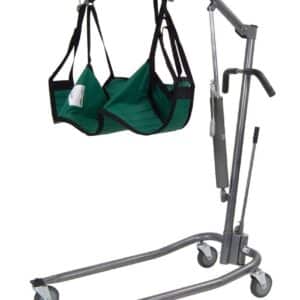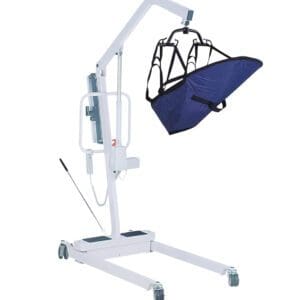Choosing a sling is something that is overlooked. Slings come in many styles and variations, for example you can purchase full body slings which work similar to a hammock style when picking an individual up, you have a commode cutout which allows a patient to be picked up and sat over a commode without getting out of the lift. All Slings are machine washable and come in sizes like small, medium, large and so on. Usually the size of the sling is determined by the height and weight of the patient.
1. Weight Capacity
Each patient lift has a weight limit, which can vary depending on the model. Standard lifts typically support up to 400 lbs, while **bariatric models** can support up to 600 lbs or more. Always check the product specifications to ensure it fits the user’s needs.
2. How to Choose the Right Patient Lift
Selecting the right patient lift depends on the patient’s mobility level, the environment, and the caregiver’s capabilities. Options include **manual hydraulic lifts** (cost-effective, require physical effort), **electric lifts** (easy to use, battery-powered), and **bariatric lifts** for heavier individuals.
3. Transfer Techniques
Patient lifts are designed to safely move individuals from one position to another, like **bed-to-wheelchair transfers** or **bathroom transfers**. It’s crucial to follow the manufacturer’s instructions and ensure that the patient is properly secured with a sling to avoid injury.
4. Maintenance
Regular maintenance is essential for ensuring the patient lift’s longevity and safety. This includes **cleaning slings** after each use, checking for wear and tear, and **recharging batteries** regularly if it’s an electric lift. Routine inspections of moving parts are also necessary.
5. Insurance and Medicare Coverage
Many manual patient lifts are **partially or fully covered by insurance** or Medicare if deemed medically necessary. For Medicare, patient lifts may be categorized under **durable medical equipment (DME)**. You’ll need a doctor’s prescription and documentation to qualify.
Consider your surroundings when choosing a patient lift. You will need room to maneuver around in your home.





